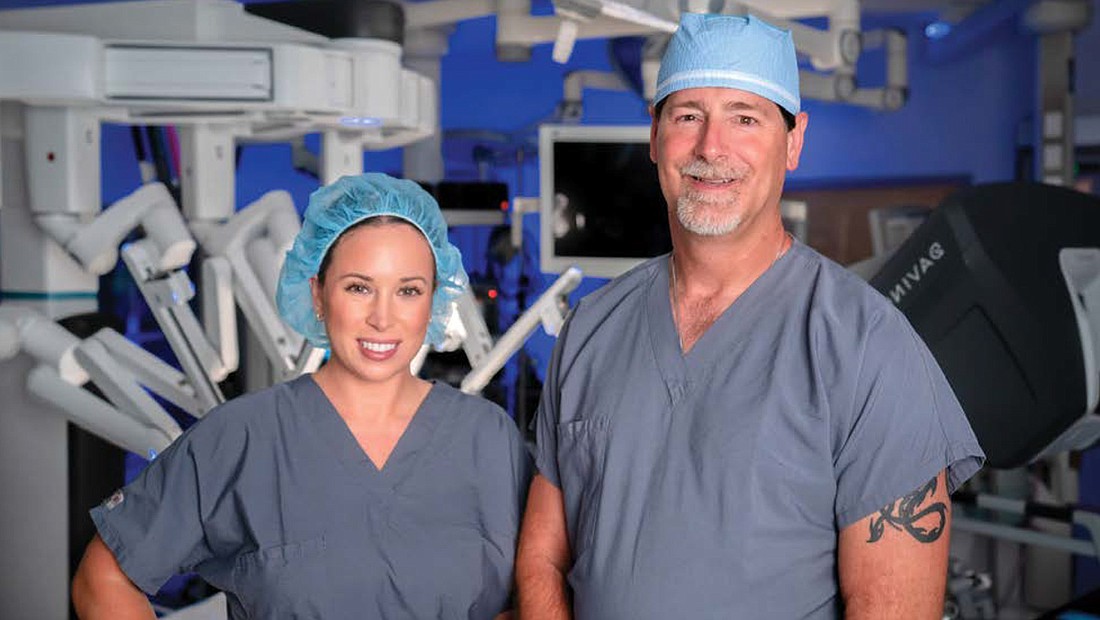- July 26, 2024
-
-
Loading

Loading

Abdominal and umbilical hernias are relatively common, but many people aren’t familiar with what they are. Hernias occur at all ages. While they are an urgent matter, they don’t have to be scary. David W. Dexter, MD, a general surgeon with Lakewood Ranch Medical Group, shares important information for those struggling with common hernias.
What is an umbilical/abdominal hernia?
A hernia is a hole in the inner layer of the abdomen that bulges outward. The most common hernias occur at the umbilicus (belly button). Everyone has seen someone with an “outie,” but probably didn’t realize it was a hernia. Some bulges can even be seen through clothing.
A similar hernia occurs above the belly button called an epigastric hernia. It is more difficult to identify than other hernias and is often mistaken for something else.
Lastly, there are incisional hernias that occur anywhere in the abdomen where someone has had prior surgery.
What causes an umbilical or abdominal wall hernia?
Contrary to popular belief hernias are not caused by strenuous activities or heavy lifting. Most hernias are birth defects that leave small holes in the abdominal wall. When one performs strenuous physical activities, we increase abdominal pressure. This is how and when many identify their hernias. Some hernias can be painful, but many have no discomfort at all.
An incisional hernia is a result of a previous operation. The abdominal wall doesn’t heal for a variety of reasons and a bulge develops at that location.
What are the symptoms of these kinds of hernias?
Hernias usually present with a bulge which can be seen or felt. Some hernias are completely painless while others may cause discomfort with lifting or strenuous activities. Either way, if you suspect or know that you have a hernia – it should be repaired.
What is the treatment for umbilical/abdominal hernias?
The only treatment for a hernia is to repair it surgically. Hernias do not involve muscles so no strengthening exercise will help. Most hernias if treated while small can be repaired using a minimally invasive robotic approach.
Larger or massive hernias can also be repaired, but the techniques are more involved. A larger incision may be required, and the operation may be more complex.
What are the dangers of leaving a hernia untreated?
A hernia that is trapped in place is called an incarcerated hernia. On some occasions a hernia may strangulate. This can be a life-threatening condition and requires emergency surgery. Recovery from these operations can be more challenging and requires more time off from work or physical activities. This can be avoided if the hernia is identified and treated sooner rather than later, especially while they are small.
When should someone plan to see a doctor?
You should consult with your physician if you suspect you have a hernia. It is best to have them fixed before they begin causing issues.
To schedule an appointment with Dr. Dexter at Lakewood Ranch Medical Group, call 941-254-6767 or visit lakewoodranchmedicalgroup.com/appt.